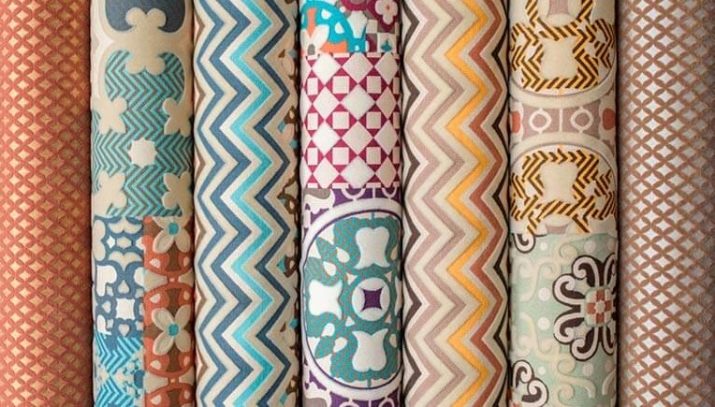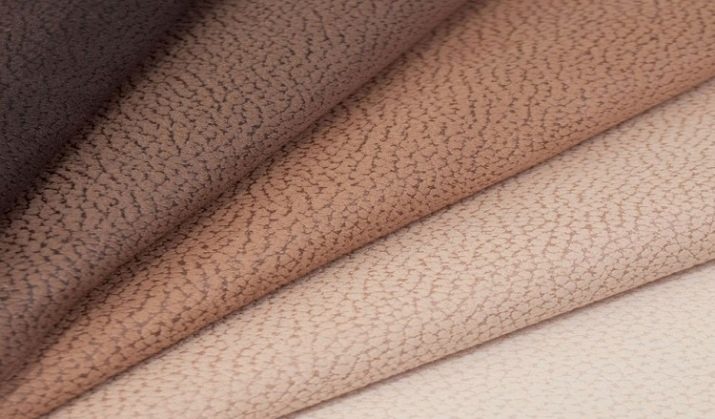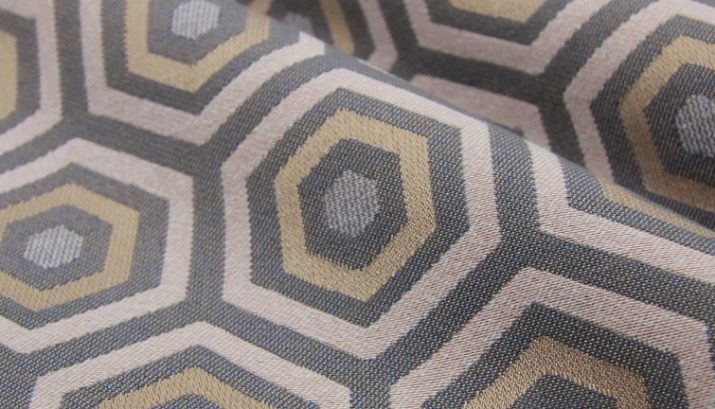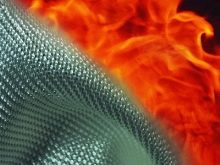Overview of fabrics for upholstery chairs and their selection

To update the look of your furniture, you need to change its upholstery from time to time. And in order for the new coating to serve for a long time, it is important to select the right material. Today the market offers a wide variety of options for high-quality and practical renovation of chairs and stools.



Primary requirements
Of all the varieties of upholstered cabinet furniture, the maximum load falls on the chairs, and this cannot but affect their integrity and external characteristics. In order to quickly and easily update furniture at no extra cost, they resort to replacing the upholstery. At the same time, the service life of the product and the preservation of its original characteristics directly depend on the quality of the material, that is, its resistance to wear, abrasion, density and strength:
- strength;
- resistance to mechanical damage;
- moisture-repellent characteristics;
- dimensional stability;
- crease resistance;
- combustion resistance;
- ease of cleaning.
In addition, the upholstery fabric should not form pills.


Separate requirements are imposed on the material, taking into account the specifics of its application. All types of fabrics for chairs and stools can be conditionally divided into two large groups. The first is relevant for the kitchen-dining room, the second can be used for furniture in offices, living rooms, bedrooms and in the hallway area. Chairs and stools in the kitchen are usually simple in design, so changing the upholstery is not difficult. However, the use of furniture in this place is associated with intense mechanical stress, with contact with moisture and dirt.That is why the base of the fabric must be as strong as possible so that the product can withstand abrasion.
It is important that the texture is stable, the fabric does not deform during operation and does not wrinkle. Kitchen textiles should be fire-resistant and water-repellent and should be cleaned quickly and easily when needed. The study and living room are often visited by households, as well as their guests. That is why special attention is paid to the appearance of the fabric. The design should be attractive and harmoniously fit into the overall concept of the style of the room. The fabric should not peel off, as the pellets significantly impair the visual characteristics of the furniture.
It is advisable to give preference to a non-crease canvas, it should be quickly cleaned and not deteriorate from exposure to water.


Views
All types of furniture fabrics on the market can be classified into several categories.
By composition
Depending on the composition, there are three groups of upholstery fabrics.
- Natural - such canvases are 100% linen, wool and cotton, less often jute is used. The advantages of the material include the ability to pass air and environmental safety. However, under the influence of moisture, the fabrics give a noticeable shrinkage, therefore it is not recommended to use them for dining and kitchen areas.

- Synthetic - this group includes nylon, nylon, polyester and acrylic. Such fabrics are characterized by high resistance to abrasion and other mechanical influences; after wet cleaning and washing, they do not shrink. But at the same time, they are often unpleasant to the touch and do not allow air to pass through well.

- Artificial Are chemically processed natural fibers. A typical representative of such materials is viscose and its analogues. It is hypoallergenic, easy to maintain and soft. When washed, it does not shrink and at the same time has a completely affordable cost.

By the method of production of the face layer
According to this characteristic, all types of fabrics are divided into woven and non-woven.
- Non-woven - usually imitate natural leather or suede, these include flock and upholstery with a similar structure. Technically, they are pile glued to a backing. The durability of such fabrics directly depends on the chosen lining and the quality of the adhesive composition.

- Woven - these materials are obtained by weaving threads. This includes jacquard, chenille, tapestry and some other canvases. The pile here is either woven into the substrate, or is absent altogether.

By production technology
Depending on the manufacturing technology of fabrics, the following types are distinguished.
- Artificial leather - a canvas with a soft, pleasant to the touch texture. The fabric is dense, durable, and easy to maintain, cleaning can be done with plain water and a sponge.

- Faux suede - is a cotton or polyester backing with thick fine pile glued to it. Tactilely pleasant fabric, available for sale in a wide variety of textures and shades. However, it requires delicate and gentle care.

- Jacquard - this material is famous for its nobility, it belongs to the premium class. The fabric is suitable for people who prefer unique designs. By its structure, it is a blended fabric consisting of natural and synthetic threads. This ensures the wear resistance of the material and its dimensional stability.

- Tapestry - braided wear-resistant and very dense material. As a furniture covering, it does not deform, retains its impeccable appearance for a long time.

- Leather - durable eco-friendly material. Looks expensive, gives the room a respectable look. It should be borne in mind that the skin needs specialized care. The skin reacts poorly to high temperatures and does not tolerate direct ultraviolet rays.

- Chenille - translated from French this word means "caterpillar". The fabric received such an unusual name because of the type of weaving of the fibers. They curl tightly, additionally villi are woven into them. At the exit, the matter turns out to be textured and looks very expensive. Chenille is prized for its moisture resistance as well as abrasion resistance. The fabric has a soft elastic structure and long-lasting colors that do not fade in the sun.

- Jacquard - affordable, relatively inexpensive material. Its main advantage is the dense weaving of fibers and the presence of both synthetic and natural threads in the structure. This ensures a long service life, the fabric does not deform, does not fade under the influence of direct sunlight and does not lose the brightness of colors after many washing cycles. In addition, jacquard is easily cleaned of any dirt, therefore it belongs to the group of premium hygienic materials.

- Flock - this fabric will be the perfect solution for homes where small children live. The material is quickly and easily cleaned of even the most difficult types of contamination.

- Velours - another type of pile fabric based on synthetic and natural fibers. The material has become widespread in the manufacture of frameless chairs. The velor cover is soft. The canvas does not wrinkle even after prolonged use; it is available for sale in a wide selection of colors and prints. The only drawback is the rapid loss of lint. In addition, only the most gentle cleaning agents can be used to clean these textiles.

- Microfiber - new generation textiles. It is very popular due to its resistance to mechanical stress of medium and high intensity. Weaving is based on joining together ultra-fine fibers of synthetic origin, usually used in combination with natural materials.

Less often, chairs are upholstered with some other canvases, but it is the listed ones that are used more often than others. They are distinguished by a variety of prints, textures and shades, and are also less susceptible to unwanted external influences.
Cotton and natural suede as upholstery materials will cost an order of magnitude more, and will also require the most difficult maintenance. Without specific care, such materials will not last long.

Additional processing options
To improve the performance and protect the furniture sheet from various negative influences, they are subjected to additional processing - impregnated with special compounds.
- Water repellent - such products significantly reduce the amount of moisture absorbed by the upholstery.
- Fire resistant - create a coating that prevents ignition and the spread of fire.
- Dirt-repellent - after application of such products, oil, paint and other contaminants are absorbed into the finish to a lesser extent. Although it must be borne in mind that such impregnations do not help from everything and not 100%.
- Antiallergenic - absolutely safe impregnation for people, prevent the reproduction of dust mites and other pathogenic microflora.
Impregnations are applied during the fabric production process. They are sprayed onto the finished surface and left to dry for a while. These are compounds that are safe for humans and do not cause an allergic reaction on the skin and do not emit unpleasant odors.



Which fabric should you choose?
When choosing upholstery fabric for chairs, there are a number of criteria to consider.
- Purpose of furniture and features of its operation - the density, strength and type of coating directly depends on this.
- Texture - here the degree of softness, the presence of a printed, embossed or embroidered pattern is taken into account.
- Upholstery design and appearance - is of the same importance as all other structural elements of furniture. They must be in harmony with each other.
- Price - sometimes it is more practical to purchase an expensive item that will be in use for many years than a cheap one that requires replacement every 2-3 years.
- Environmental friendliness - if people with allergies live in the house, it is better to pay attention to artificial materials. Thanks to high technologies and special impregnations, they almost never cause unwanted reactions in the body.

Before choosing a canvas for a banner, you should decide on the place where the furniture will be placed, think over the combination of textures and the intensity of use.
Be sure to consider the presence of small children and pets in the house. - Children often stain furniture with food, drinks and paint with felt-tip pens, and animals sometimes use chairs as a scratching post. In this case, the use of natural canvases will be impractical, since regular cleaning quickly degrades the quality of the surface. In such houses, it is better to give preference to synthetic or artificial materials - they are easy to clean, repel moisture and do not absorb foreign odors.









